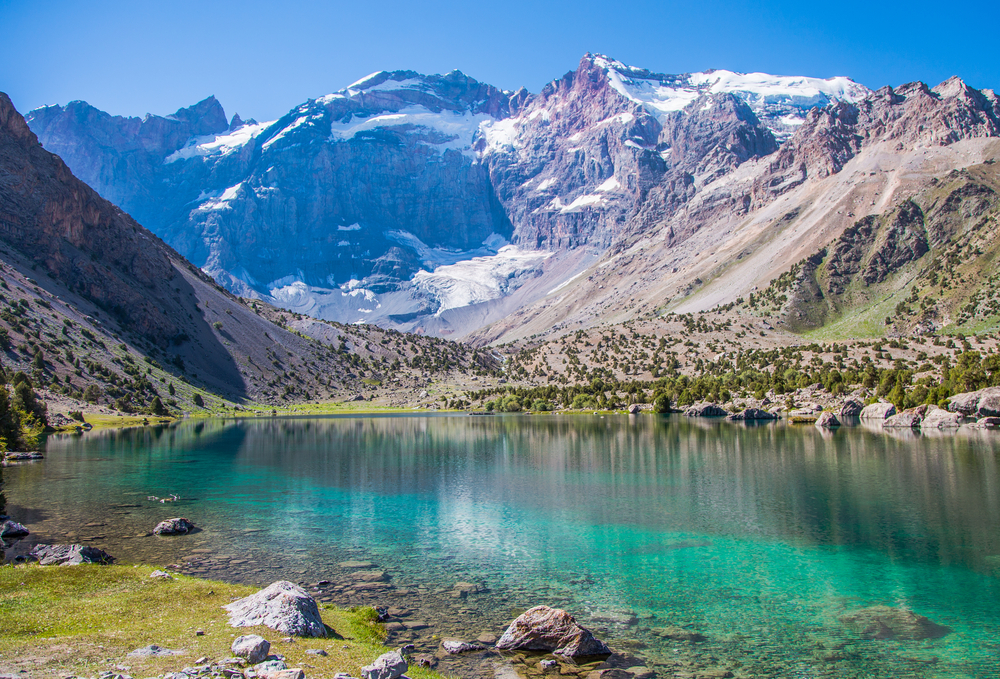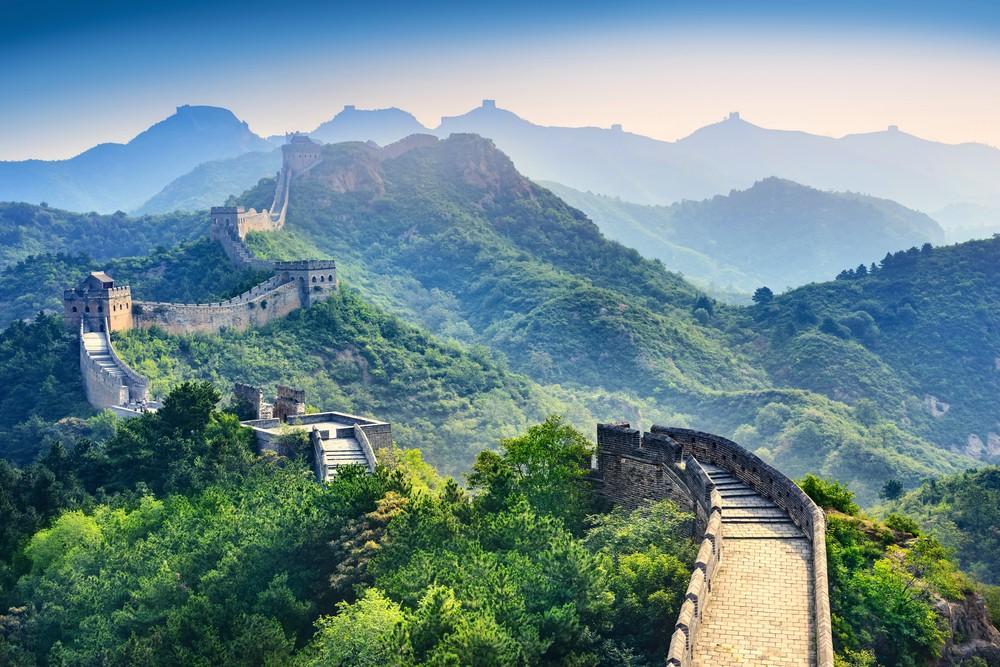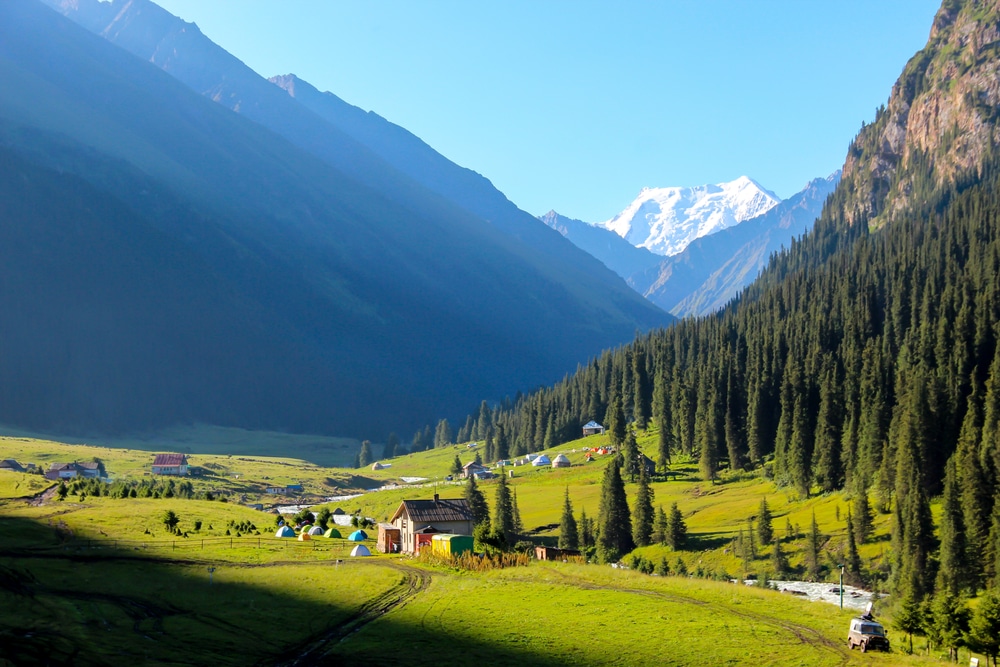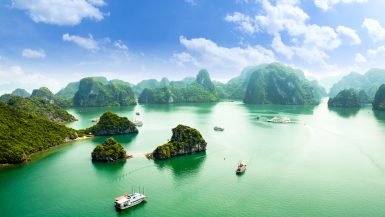Nestled between Kyrgyzstan, China, Afghanistan and Uzbekistan lies Central Asian Tajikistan. The country is less than half the size of Germany and has only about 9.2 million inhabitants. Tajikistan has hardly been developed for tourism so far, although the country is scenic and also has some cultural highlights to offer due to its location on the historic Silk Road.
Interesting facts and special features about Tajikistan
History and culture
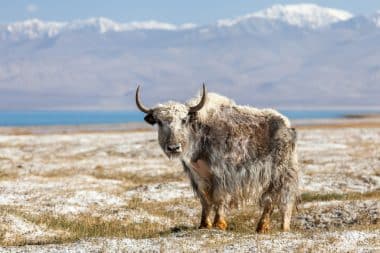
From the sixth century BC, the territory of today’s Tajikistan was alternately under the rule of the Persians and the Saks; from about 330 BC it belonged to the empire of Alexander the Great. Other empires, such as the Mongolian empire, came and went over the centuries. Islam reached the region in the 8th century. In the Middle Ages, Tajikistan belonged to Persia. In 1868 it became a Russian colony and in 1929 it became part of the Soviet Union as the Tajik Soviet Socialist Republic.
In 1991, Tajikistan gained its independence as part of the collapse of the Soviet Union and almost immediately plunged into a civil war between the state and Islamic fundamentalists that lasted until 1997.
Due to its affiliation to different rulers and also due to its location on the Silk Road, different religions and cultures have left their mark on Tajikistan over the centuries. These include Buddhism, Christianity, Zorastrism, Manichaeism and, last but not least, Islam.
Today, about 98 percent of Tajiks are Muslims, most of them Sunnis. The remaining two percent are distributed among Christians, Zoroastrians and some Buddhists. The ancient Jewish community has only about 500 members, almost half of whom live in the country’s capital, Dushanbe. Religious freedom is officially guaranteed in Tajikistan, but in fact it is severely restricted.
The vast majority of the population of Tajikistan belongs to the Tajik ethnic group. These are ethnic Persians. The Tajik language is also a Persian dialect. Thus, Tajikistan is the only -stan state in Central Asia that does not belong to the majority of Turkic peoples. In the course of the civil war, numerous ethnic non-Tajiks have left the country.
Tajikistan is also home to a small minority of ethnic Germans, who shrank even further after the collapse of the Soviet Union.
Tajikistan has one of the youngest and fastest-growing populations in Asia.
Geography, climate and economy

Tajikistan is the smallest country in Central Asia. More than two-thirds of the country’s area is high mountain, almost half of the country is over 3,000 meters. To the east are the Pamir Mountains; it is also home to the highest mountain in the country at 7,495 meters, the Ismoil Somoni Peak. To the north is the Alai Mountain Range and to the west are the Fan Mountains and the Serafshan Range. North of the Alai is the only lowland in Tajikistan, which is crossed by the largest river in the country, the Syr Darya, which allows intensive agriculture here.
The largest lake in Tajikistan is the Karakul in the east; other large lakes are Lake Sares and Lake Zorkul.
The Tajik climate is extremely continental with cold winters and hot summers. In the summer months, temperatures reach up to 45 °C. Since the amount of precipitation is also very low, steppe vegetation prevails in the country.
Economically, agriculture is very important. 43 percent of the working population work in agriculture, but only about 7 percent of the country is intensively used for agriculture at all. Cotton is mainly grown. In addition, cattle, sheep and goats are kept and silkworms are bred.
Tajikistan has reserves of oil, natural gas and lignite. In addition, ores such as tin, lead, rare earths, mercury, silver, gold and uranium occur in Tajikistan. The most important export good is aluminum. The country also exports electricity.
Cities and sights
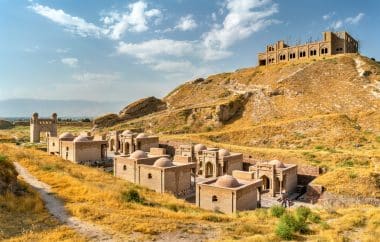
“The one” outstanding attraction of Tajikistan is certainly its magnificent high mountain landscape. The incredible views and wildlife make the country a dream for nature lovers, hikers and climbers.
In the west of Tajikistan lies Dushanbe, the capital and largest city of the country with 780,000 inhabitants. Dushanbe has the most important of the country’s four international airports; So, travelers will almost certainly arrive here.
Dushanbe has numerous universities and educational institutions. The National Archaeological Museum exhibits finds from the history of Tajikistan, including a 14-metre-long reclining Buddha statue found in the south of the country in 1966. It is one of the largest Buddha representations in Asia.
The Gurminj Museum is dedicated to the musical tradition of the country and its typical instruments.
One of the most striking buildings in Dushanbe is the 30-meter-high monument in honor of Ismail Somoni, who ruled the area of today’s Tajikistan 1,000 years ago and is now considered the “Father of the Nation”. The monument is located on Friendship Square.
In 2011, the world’s tallest flagpole at 165 meters was erected in front of the Palace of the Nation at a cost of five million dollars. The occasion was the celebration of the twentieth anniversary of independence. In the meantime, however, Jeddah in Saudi Arabia has an even higher mast.
Worth seeing is the Ismaili Center, completed in 2009, a meeting place for Ismaili Shiites and one of only six such places in the world.
The second largest city in Tajikistan with 172,000 inhabitants is Chudchand. It is possible that Khudchand originated from the city of Alexandria Eschatê, founded by Alexander the Great. This is not certain, but nevertheless in 1986 the two thousand five hundredth year of the founding of the city was celebrated. Khudchand was once an important trading hub of the Silk Road. Near the city is the Kairakkum Reservoir, the largest in Tajikistan in terms of area. Khudchand is very isolated, it is surrounded on three sides by Uzbekistan and cut off from the rest of Tajikistan by a mountain range.
Another city worth mentioning is Chorugh. Chorugh has about 28,000 inhabitants and is located directly on the Afghan border. It is surrounded by the mountains of the Pamir Mountains; these are up to 5,300 meters high here. Chorugh has a well-known botanical garden, which enjoys a very good reputation in professional circles.
Finally, Punjikent is a city of 35,000 inhabitants in western Tajikistan. It is located right next to the ruined city of Old Panjakent, which was a trading center of the Silk Road in its heyday in the eighth century and was only about 80 kilometers from Samarkand.

